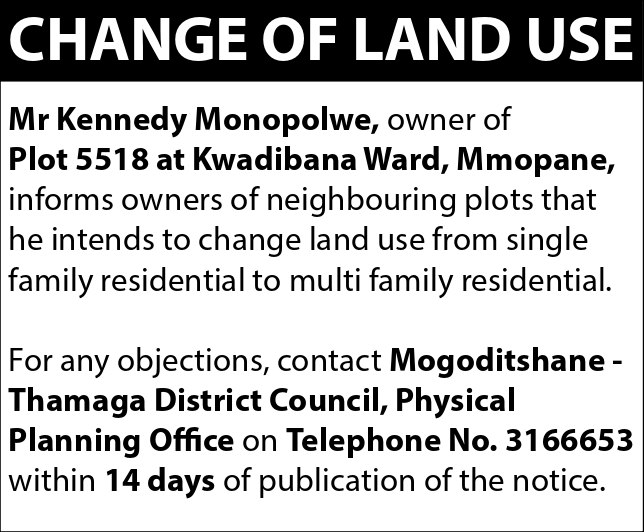According to market pundits, it will take time for the limping giant that is Choppies to rebuild its brand and regain investor confidence. In the meantime, retail inventors will channel their money towards arch rival Sefalana, which could out-compete Choppies in the next five to 10 years. KEABETSWE NEWEL reports.
The signs are there already. Sefalana, Botswana’s home-grown Fast Moving Consumer Goods (FMCG) retailer, is at least three times more profitable than Choppies at present, for the first time in history.
Sefalana published its full year financial results for 2019 during the week. With revenue in excess of P5 billion and profit for the year at P198.6 million, the financials are so good that the company itself has described them as its “best” ever.
By contrast, the last time Choppies released its full year financials was 2017 when the revenue of the behemoth hit the P9 billion mark but only P74.6 million was recorded as profit. While Choppies did not release any financials in 2018, the group’s CEO, Ramachandran Ottapathu (who is currently under suspension), cautioned his fellow shareholders and investors that profits would be 20 percent or so lower, whenever they came out. From the P74.6 million profit made in the previous reporting period, it means over P15 million will be wiped out in the 2018 financials. Given the prevailing challenges at Choppies, analysts believe that even the 2019 financials, whenever they come, will be under pressure.
In terms of shareholder value, Sefalana’s higher profits enable it to pay more to shareholders, a factor that Head of Research at Motswedi Securities, Garry Juma, says attracts investors. When Thapelo Tsheole, CEO at Botswana Stock Exchange (BSE), suspended Choppies in November 2018, the group was trading at 69 thebe per share. On the other hand, Sefalana’s share price is currently at a staggering 855 thebe, placing it among the top five companies with the largest share price on the domestic bourse. A company’s share price is determined by demand for its shares and investor confidence. The more investors jostle for a company’s shares, the higher the price rises.
Further, says Juma, when the share price declines, it drags down with it the market capitalisation of the company. After the Choppies share price fell to record lows, its market capitalisation, which was once at over P4.7 billion, crumbled to just P855 million, significantly lower than Sefalana’s P2.1 billion at present.
Like Choppies, Sefalana embarked on retail expansions through its Shoppers brand. Since its vigorous expansion, Sefalana’s market capitalisation has improved significantly. Managing Director Chandra Chauhan’s strategy is one of cautious expansion, while Ram’s at Choppies was less cautious in pursuit of dominance in terms of store numbers. Juma observes that when Sefalana gets into another country, it takes time to observe the market before investing heavily in order to minimise risks.
Along the way, Choppies’ less cautious strategy bled money as it funded expansions outside Botswana while profits were on a free fall. During its 2017 full year, Choppies had a total of 235 stores across Africa. The largest number of stores was in South Africa with 88. In Botswana, Choppies had 85 stores, 1 in Namibia, 15 in Zambia, 32 in Zimbabwe, 2 in Tanzania, 11 in Kenya and 1 in Mozambique. Mozambique and Kenya are currently under strain while South Africa is not profitable. By contrast, Sefalana operated a total of 51 stores in Botswana and 14 in Namibia, making a grand total of 65 stores. Says Juma: “Sefalana is one store you cannot ignore. They have been growing sustainably and have proven to investors that they are a trustworthy investment.”
He notes that once it is involved in scandals, it will take time for a blue-chip stock like Choppies to rebuild its brand and regain investor confidence. “It takes a lot of restructuring and hard work for investors to regain trust,” Juma adds.
Choppies is suspended from trading its shares, which means that its investors are losing money and cannot even sell their stock. “In the next five to 10 years, Sefalana will be a force to reckon with,” Juma notes. “We cannot rule out the chances of Sefalana surpassing Choppies over the years.”
Rivalry between Choppies and Sefalana grew and personal over the years, with Choppies fighting to stay in dominance while Sefalana wanted to reclaim it. To understand the rivalry properly, Sefalana was the first company to list on the Botswana Stock Exchange Limited (BSEL) in 1989, about 30 years ago. Then Sefalana was the largest retail supermarket in Botswana, commanding more than half of the market share locally. Choppies, which was founded in 1986, was then just a new broom. It had one store named Wayside Supermarket (Proprietary) Limited in Lobatse, which was owned by the Chopdat family. A second store opened in 1993 while Sefalana’s shares were already being traded on the BSE.
Ram singlehandedly built Choppies into a giant. But he is also the man being fingered for its downfall.




